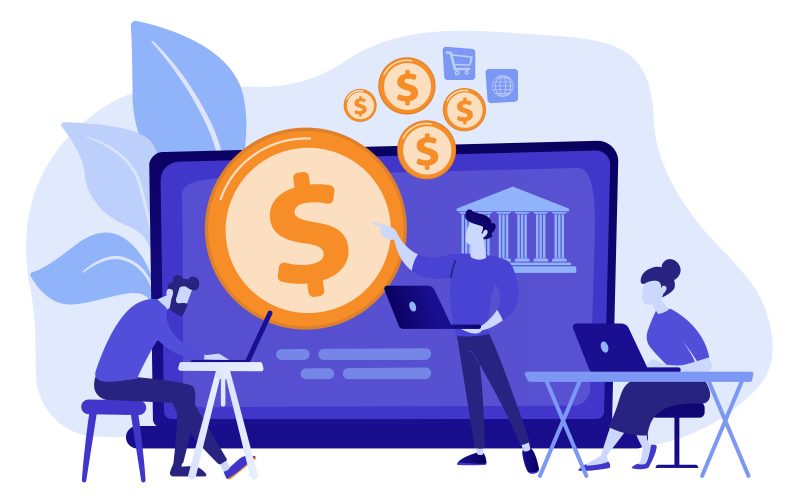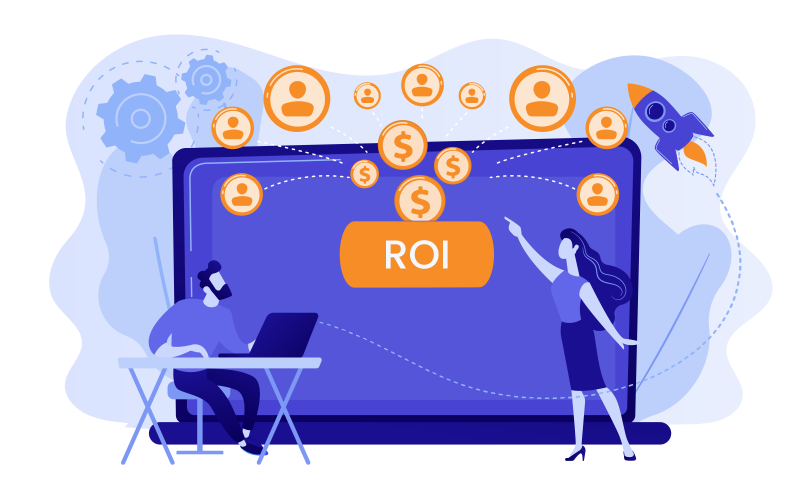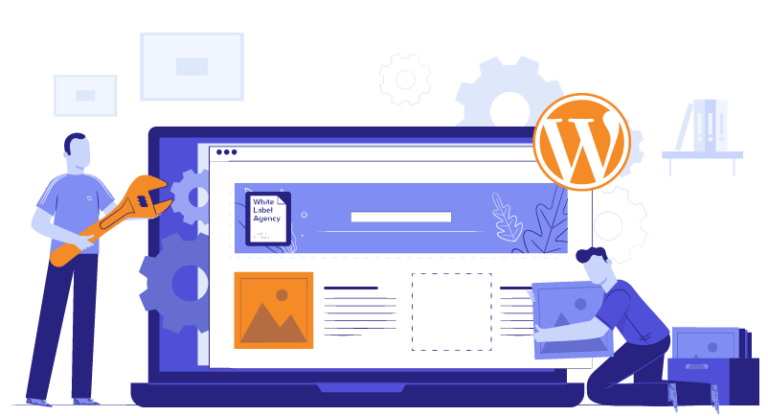“There’s often a gap between the actual cost of a website and what the client has in mind. This can usually be overcome by educating the client.”
– Joost, Sales Manager, White Label Agency
It’s a common situation in the digital market: clients underestimating the true cost and value of creating a website. This gap in perception is a significant challenge that agencies must address.
At White Label Agency, we often receive feedback from partner agencies whose clients hesitate to fully commit to web development projects due to a misunderstanding of the potential returns. It’s an unfortunate situation, as agencies provide substantial value to their clients and deserve fair compensation for their efforts. However, it’s up to agencies, who better understand the details and advantages of web development, to educate and help their clients see this value.
The key to bridging this understanding gap is clear and simple communication. Our Sales Manager, Joost, points out – “If your client understands the quote effortlessly, 50% of the sale is achieved. As an agency, you need to prepare a clear and convincing case for your clients. This means showing them the costs and also teaching them about the important terms and ideas that show the worth of web development.”

Understanding Web Development ROI
Return on Investment (ROI) is a key term used when assessing the value of a website. In the context of website development, ROI measures the effectiveness and financial return of the site compared to its cost. This metric is particularly significant for non-e-commerce sites where direct sales are not the primary metric for success.
Website ROI is calculated using the formula: ROI = (Profit generated from the site – Cost of investment) / Cost of investment.

The result is a quantification of the financial gains achieved from the investment against the total amount spent.
For example, if a business spends $20,000 on website development and, as a result, earns profits of $40,000 that can be directly attributed to the website, the ROI would be calculated as follows: ($40,000 – $20,000) / $20,000. This gives an ROI of 1, or 100%, indicating that the website’s earnings returned the investment made. In most cases, websites return a great deal more than this. For most of the agencies we partner with at White Label Agency, the returns are between 200-300%. This far eclipses the 10-30% returns that small businesses typically receive from other investment opportunities.
ROI is a particularly useful metric for non-e-commerce sites, where the focus is often more on lead generation, brand awareness, or content engagement, rather than on immediate sales. In these cases, the ability to evaluate investment is a little more complex. For an agency, understanding and effectively calculating ROI for clients allows them to make informed decisions about their website investment, ensuring that they are not under-exposed online. Incorporating website ROI assessment into your sales repertoire and project briefing will likely lead to substantial benefits to your sales.
SERVICES
WordPress development agency
We’re a WordPress development agency that works exclusively for digital agencies. We build custom websites based on your specs.
Calculating the ROI of Your Website
Calculating the ROI of your website involves a few steps. First, you must identify all the costs associated with creating and maintaining your site. These costs typically include design, development, and ongoing maintenance. Each of these components requires investment, from the initial layout of the website to the regular updates that keep it running smoothly.
Design costs can vary greatly depending on the complexity of your website. Development costs encompass the actual building of the site, which may involve coding, content management system setup, and integration of any necessary functionalities. Maintenance includes regular updates, hosting fees, security measures, and any other ongoing support required.
To assess the profit generated from the site, you need to track the income directly resulting from your online presence. This could be through direct sales, but more often it will be measured by quantifying the number of leads a website generates. The proportion of leads that convert to sales typically remains fairly constant for a business, given the maintenance of its digital marketing strategy. For each of your clients, establish a measure of what a lead is worth on average, both in terms of revenue and profits.
Keep in mind that the proceeds from new customers usually continue far beyond an initial sale, or an initial year. Most successful small businesses establish a loyal customer following, with customers that repeat-purchase for many years. Customer Lifetime Value is a commonly used metric for capturing the true long-term value of each new customer your website brings.
The Importance of Tracking Website ROI
For business owners, tracking the ROI of a website provides a clear picture of whether the investment in the site is paying off. Knowing the ROI helps businesses understand which aspects of their website are working well and which areas might need more attention or a different approach.
ROI can be used both to evaluate past performance and expected future gains. As such, it enables businesses to hone their marketing strategies. If the ROI is high, it means the current strategies are effective and can be continued or expanded. If it’s low, it’s a signal that the strategy needs adjustment. This might involve reallocating resources to more profitable channels, revising content, or improving user experience.
Effective budget management hinges on understanding ROI. By regularly tracking ROI, businesses can make informed decisions on where to invest their money to get the best returns. This could mean investing more in website enhancements, online advertising, or SEO efforts.
Google Analytics is one of the primary tools used to track website ROI. It provides a wealth of data on website traffic, user behavior, and conversion rates. With this information, businesses can calculate key performance indicators like cost per acquisition, customer lifetime value, and conversion rates—all critical for measuring the profitability of their web development investments.
SERVICES
WordPress maintenance plans
We offer an easy way for agencies to guarantee ongoing support to their clients with our WordPress maintenance plans.
Practical Steps to Measure and Improve Your Website’s ROI
To effectively track and enhance the Web Development ROI, begin by setting clear, measurable goals for your website. These could range from increasing traffic and improving engagement to generating more leads and boosting sales. Each goal should have corresponding metrics that can be monitored for performance.
Next, consistently review key metrics through analytics tools. Focus on traffic volume, conversion rates (traffic to leads), the closing ratio (leads to sales), and bounce rates. Pay attention to where visitors are coming from and what actions they take on your site. This data will inform which aspects of your website are working and which ones need improvement.
Finally, maintaining and updating your website is key to sustaining its ROI. Regular updates keep the site secure, functional, and relevant to your audience. Frequent content updates, design refreshes, and usability improvements can lead to a significant increase in return on your web development investment.
Strategies for Selling Web Development ROI to Your Clients
When it comes to presenting web development services, the conversation shouldn’t stop at the technical aspects. It’s about steering the discussion towards the Return On Investment (ROI) that a well-structured website can provide. For clients, understanding the financial gains versus the costs is crucial, and that’s where your expertise comes into play.
Start by framing your conversation around the direct benefits they can observe. This might include an increase in customer inquiries, higher conversion rates, or more efficient customer service interactions due to website improvements. Then, highlight the less direct but equally important gains like stronger brand presence, market differentiation, and the establishment of a credible digital footprint.
Use real-life examples and data to highlight your points. If you’ve helped a previous client increase their returns by 20% through website optimization, share that story. Demonstrating tangible results can make the concept of ROI more relatable and convincing.
Lastly, assure them of your commitment to not just building a website, but to crafting a valuable digital asset. Emphasize the ongoing support and updates you provide, which are essential in maintaining and improving website ROI over time. With this approach, you’re selling a service and partnering with your clients for continued success.
Partner up with the WLA
If your agency wants to secure client commitment and generate optimal value for customers, grasping and utilizing the concept of Web Development ROI is key.
At White Label Agency, our skilled team of over 100 in-house developers employs a spectrum of advanced tools to enhance the ROI of web development projects. Reach out to our sales team to see how we can make your website more effective, more compelling, and more profitable. We offer a range of different services, including website development, maintenance, and dedicated developer rental.



